I hope you all enjoyed seeing some of the very latest harp guitar projects in last week’s blog.
Not unsurprisingly, I run across some pretty interesting new “harp guitar relatives” as well.
While this first instrument could probably be re-strung as an electric harp guitar, it’s not quite that. Aaron Grad tells me he built what he thinks must be the world’s first electric theorbo, with 14 strings and re-entrant tuning.

Esoteric enough for you?!
Here’s his debut performance.
Just as harp guitars often confuse the innocent, so do “sitar guitars” and other inventions and experiments with harp-like sympathetic strings. I frequently highlight them on Harpguitars.net due to either the visual similarity or occasional “cross-over” playing styles. Here’s a bunch of new ones:
Stephen Sedgwick (who himself had made a sitar guitar sans extra strings and an internal sympathetic strings guitar) pointed me to these recently: (Above) Linda Manzer – no stranger to extra strings! – has a new sitar guitar, while (below) the Versoul company added a bank of (harp?) strings to their acoustic sitar guitar.
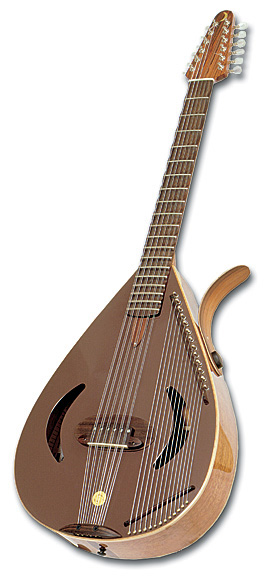
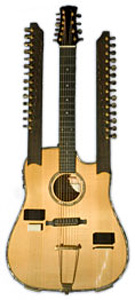
I recently stumbled on the “Tri-kanta Veena,” a sympathetic string guitar invention by Paolo Tofani, named after its 3 necks (tr-kanta = “three voices”) and the sound of the Indian veena it resembles. Searching back, I learned that Bill Asher in Santa Monica built the first one (above), which was then finished in Milan around 2006.
In 2007, a new more portable instrument was completed by Bob Van de Kerckhove in Cremona, Italy (below).
Finally, 2012 saw this beautiful new electro-acoustic version by Michele Benincaso of Stockholm, Sweden (below).
It has 34 strings arranged on its 3 “necks.” In theory, the sympathetic strings can be played as well.

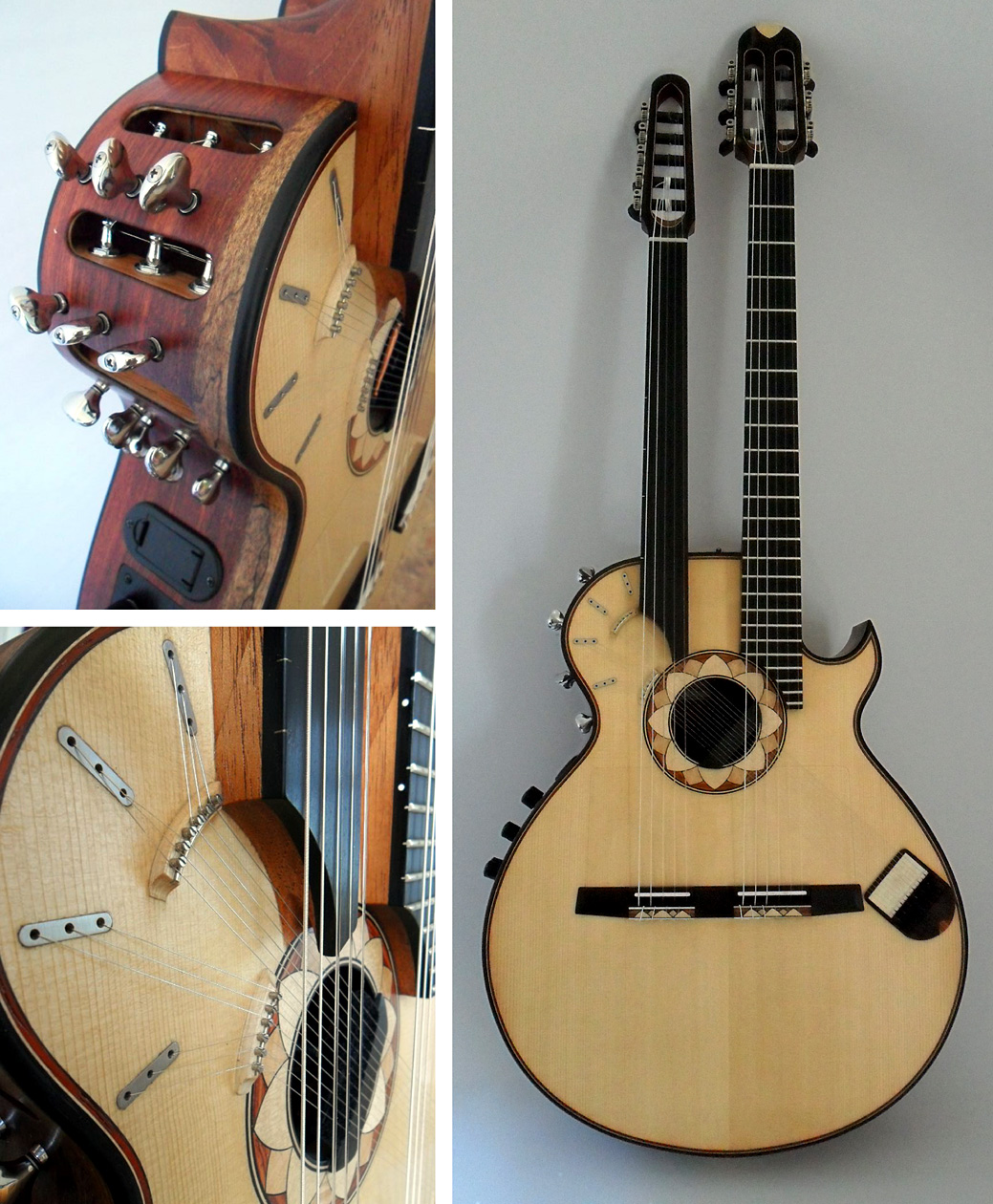
Here’s another gorgeous and intricate double-neck guitar with sympathetic strings by Philipp Neumann of Germany, made for a guitarist who wanted a second neck 5-string fretless oud neck.
The sympathetic strings are on a jawari bridge and have a mute lever (like Fred Carlson’s sympitars).
This world of instruments that could almost-but-not-quite-be harp guitars is becoming too complicated!
From fretless necks that are fingered (Steve Sedgwick’s is another that I showed last blog), we now switch to fretted necks that aren’t.
I’m seeing more and more of these “fretted harp guitars” these days – instruments that are played exactly like harp guitars, even though fully fretted. In some cases, the frets are just a design feature as they are here. Daniel Zucali (a friend of Harp Guitar Music Affiliated Artist Joachim Csaikl) was asked to build an instrument for playing Baroque lute repertoire on his Santino plan with the large offset soundhole. He calls this new design the Barocco. The customer requested the non-usable frets all the way to the top of the last string for aesthetics. He also requested a short scale (~23”) and the option of two different sets of strings for tuning in Baroque lute (Dm) tuning or terz guitar tuning. They describe the basses as chromatic, rather than diatonic.
The striking design got a new twist when the same customer requested a “travel version,” that would be more portable (it wasn’t) and silent – a “practice” guitar you’d plug in to hear. Wild! Daniel is next making a similar Barocco but without the full frets; perhaps we can then add him to our Harp Guitar Luthier page!
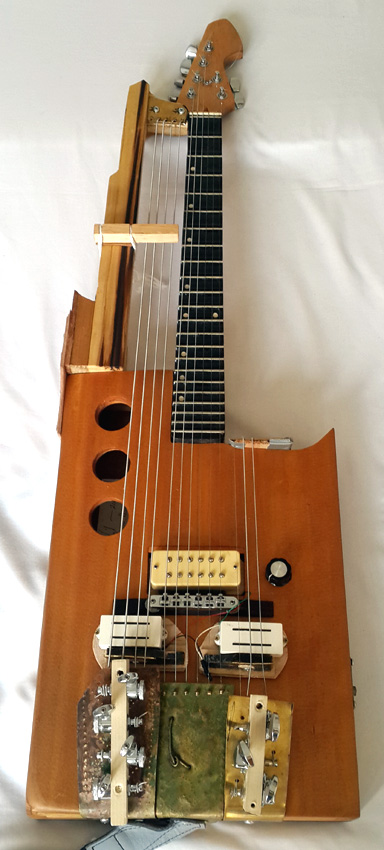
This complicated-looking electric HG by Mark Nilsen is apparently simpler than it looks. It has 3 super-treble harp strings, while its 4 sub-basses are fret-able – but with a twist! Mark describes it: “You will notice a piece of wood that runs perpendicular to the bass arm. That started its life as a bass side capo until I realized that it could be used as what I call an ‘up fret’. It is played with the left hand thumb and it feels very natural. I have never seen anything else like it so I suspect maybe it’s a new thing I can bring to the instrument. It’s pretty cool and because the ‘fretable’ area of the string is so large it makes it quite easy to get your thumb up and over the neck to fret a bass string while still having your hand in a comfortable left hand chord shape. Also note that the up fret is removable. It is tied on in the same way the frets are tied on to a sitar neck. This makes it fairly easy to adjust for what you want, very light and super easy to fabricate.” As for the design and construction, Mark adds, “I have been building square guitars for a while. My esthetic is purposely roots oriented as I have gotten a great deal of inspiration from handmade guitars and slide guitars from Africa and the American south.”
Very ingenious, Mark. And bravo to all the rest of you!

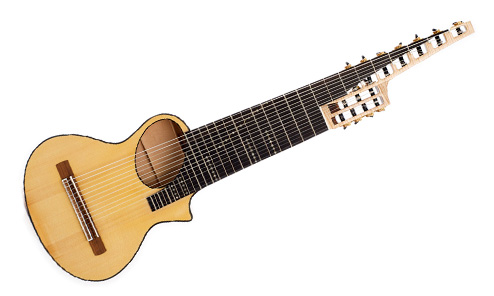

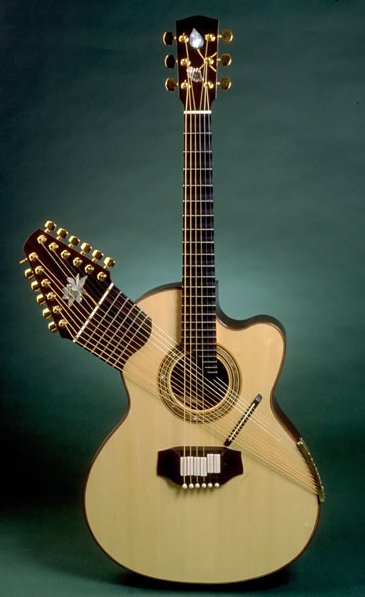
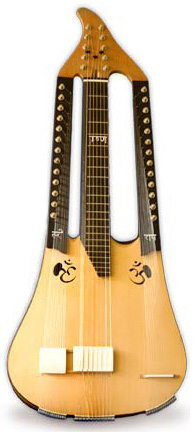


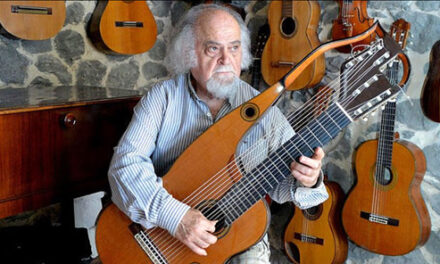
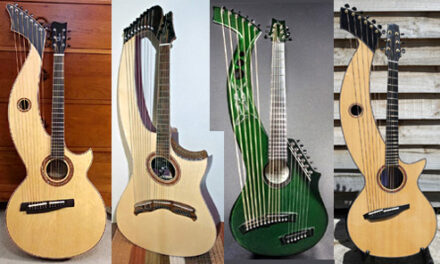
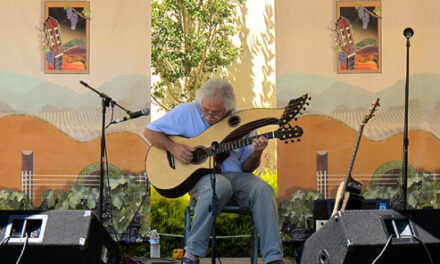
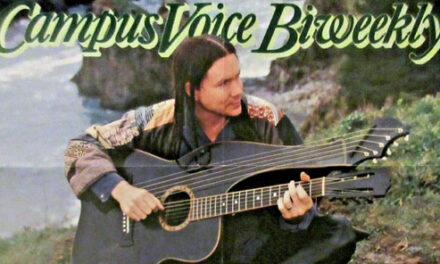
My build focus right now is back to basic 6 main/6 bass. That is all I use so I will hang out in that arena for a while. I also want to make the HG more comfortable in the playing position and easier to tune. I’d like it to look pretty while trying not to compromise just for beauty sake. I may swing back to the dark side down the road but this is where I am now. There may be some arch tops in the future. I am building a Gibson 0 currently (not an HG). This is so exciting!
Michael
Yeah, I had to bail on this one last night and come back to it today to take it all in. Wow! People are crazy and wonderful! Makes me happy and proud to be a part of it all; also makes me tired just thnking about all that work! I wonder if anyone’s ever tried making a guitar with just one neck, and maybe, say…six strings? Simpler starts to look more attractive as I get older…
I keep think about building simple 5-string banjos. Of course, then I think about building 5-string banjo with some sub-bass harp strings; and then, where would I run the 12 sympathetic strings? And how about treble harp strings; I haven’t seen many banjos with all those added…..
And, lo! My life just became complicated again.
What a world!! Love it!!
Fred
My brain became overloaded half way through and I will have to read the rest tomorrow.
Michael